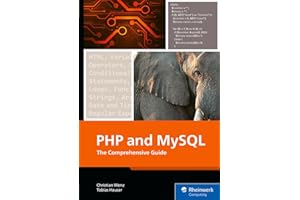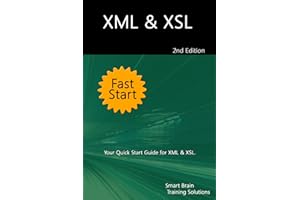Global score of the book idea "database integration"
Competition
A
Great idea. Few best sellers explicitly cover this theme.
Profitability
C
We start hitting the $1000/month mark and more in sales - provided you rank in at least one best seller list. You can afford investing hundreds of dollars in marketing and promotional tools knowing that you have a greater chance of recouping your investment.
Difficulty
A
You can easily make it to most best seller lists with less than 3 sales a day on average. This topic is ideal for new writers. Provided that the profitability and competition scores check out, you found your gem!
Niche
C
There is a decent opportunity for this idea on Amazon. You risk saturating the best seller lists if you release too many books but there is definetly potential!
Your passion
C
After all, you've got to have passion and dedication about this idea to make it work.
Technical information related to books about "database integration"
Average book price
$43.99
Average stars per book
Average reviews per book
4
Average book length
280 pages
Average title length
7 words
Top 5 best selling authors
Al Sweigart , Scott A Laman , Bonny P McClain , Matt Smith , Christian Nagel
Top 5 best selling publishers
No Starch Press; 3rd edition , ASQ Quality Press; 2nd ed. edition , American Society for Quality Press; 5th ed. edition , Packt Publishing; 1st edition , No Starch Press
Best sellers related to "database integration"
Sample of categories featuring these books
Click here for more categories directly connected to "database integration"
| Category name | Best seller rank | 50th book's rank | Median sales($) | Median price ($) | Volatility (%) | New releases (%) | Self pub.(%) | KDP Select (%) | Competition |
|---|
Related ideas and keywords

The ASQ Certified Quality Engineer Handbook
Scott A. Laman
XML & XSL Fast Start 2nd Edition
Smart Brain Training Solutions
Covers all versions of XML & XSL.
What is XML? XML, or eXtensible Markup Language, is a metalanguage. That is, it’s a language that can be used to describe other languages and a specification for storing information. Although XML and HTML may seem to have a lot in common, in reality the difference between them is like the difference between night and day.
HTML is used to format information, but it isn’t very useful when it comes to describing information. For example, you can use HTML to format a table, but you can’t use HTML to describe the data elements within the table. The reason for this is that you can’t really depict something as abstract as a distributor or a customer with HTML, which is where XML comes into the picture. XML can be, and is, used to define the structure of data rather than its format.
This Fast Start guide begins by showing you the basics of the XML language and then builds on that knowledge to show you how to create, style and transform documents.
1. XML Basics 7
2. Using XML 11
Extensions to XML 12
XLink and XPointer 12
XSL 13
XML Namespaces 14
XML Schema 14
XPath 14
Creating XML-Based Solutions 15
Authoring Tools 15
Application Development Environments 15
Database and Data Integration Solutions 16
XML Document Structure 16
XML Naming Rules 17
3. Working with Root, Parent, and Child Elements 19
Understanding Root Elements 19
Understanding Parent and Child Elements 20
Nesting Parent and Child Elements 20
Adding Root Elements to Documents 21
4. Defining XML Elements and Tags 23
Using Elements Tag Pairs 23
Using Empty Elements 25
5. Using XML Attributes 29
Defining Attributes 29
When To Use Attributes 31
Adding Attributes to Elements 32
6. Additional Structures in Elements 35
Using Predefined Entity References 35
Using Character Data Sections 37
Using Comments 38
Using Processing Instructions 40
7. Specifying XML Declarations 43
Using the Version Attribute 43
Using the Encoding Attribute 44
Using the Standalone Attribute 45
8. Creating Well-Formed Documents 47
9. Understanding DTDs 49
Using Elements in DTDs 52
Using Attributes in DTDs 53
10. Introducing XSL 57
11. Matching Structures to Template Rules 63
Understanding the Element and Root Nodes Template 65
Understanding the Modes Template 66
Understanding the Text and Attribute Nodes Template 67
Understanding Other Built-In Templates 67
12. Structuring XSLT Stylesheets 69
13. Defining the Output Format 73
Setting Attributes for the output Element 73
Formatting Output as XML or XML-Based Markup 75
Formatting Output as HTML 81
Formatting Output as Text or Program Source Code 87
Setting the Output Format 89
14. Defining Template Rules and Declarations 92
Creating the Root Template 92
Creating and Applying Template Rules 93
Outputting the Contents of Nodes 97
15. XPath Operators & Expressions 99
16. Understanding XPath Operators and Datatypes 107
17. Using Relative XPath Expressions 111
Referencing the Current Context Node 111
Referencing a Parent Node 112
Referencing Siblings Relative to the Current Context 113
Referencing Child Nodes 114
18. Using Absolute XPath Expressions 119
19. Locating Other Nodes 121
Working with Attribute Nodes 121
Working with Text Nodes 124
Working with Comment Nodes 125
Working with Processing Instruction Nodes 126
20. Using Namespaces with Element and Attribute Nodes 129
21. Using Wildcards and Predicates in XPath Expressions 131
Selecting Any Node 131
Skipping Levels in the Hierarchy 133
Filtering To Match Nodes with Specific Values 135
22. More Options… 137 Read more
You are limited to 3 queries per day.
Try unlimited access for $7.99










